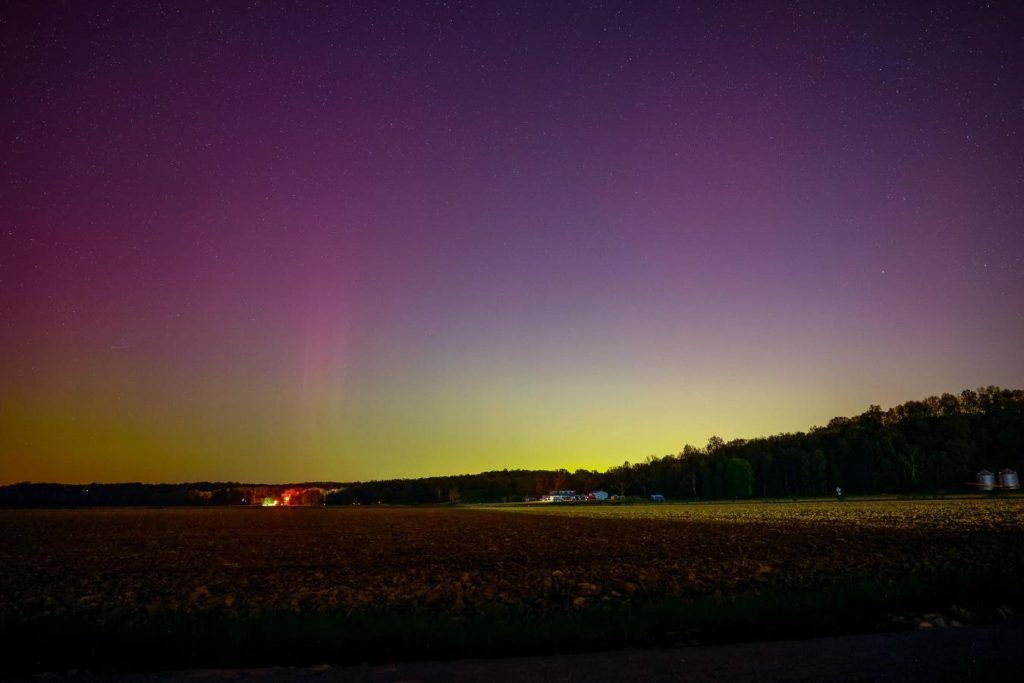Solar physicists predict that aurora could be visible from northern U.S. states on Sunday after a major eruption was yesterday observed on the sun by the National Solar Observatory.
“This eruption is forecast to impact Earth tomorrow, with heightened aurora at high latitudes likely,” said Dr Ryan French, a solar physicist at the National Solar Observatory (NSO) in Boulder, Colorado and the author of The Sun: Beginner’s Guide To Our Local Star, yesterday on X.
While not unusual, the massive eruption of solar magnetic filaments on Friday was aimed in Earth’s direction.
It was described as a “full-halo” CME by SpaceWeather.com. CME is short for coronal mass ejection, a cloud of magnetic fields and charged particles from the sun that streams into space at up to 1,900 miles (3,000 kilometers) per second.
It can take a few days to arrive, if it’s directed at Earth, where it causes a geomagnetic storm often resulting in displays of aurora.
It could strike Earth’s magnetic field this weekend, said the website, suggesting the late hours of Sunday, November 5. It’s predicting a G2-class (Moderate) geomagnetic storm with auroras in northern-tier U.S. states.
Early monitoring of space weather arriving at Earth suggested that the coming aurora could better than predicted. “Expect stronger than forecasted geomagnetic storm conditions up to the G3 (Kp7) level if these values persist,” said SpaceWeatherLive on X.
The National Oceanic and Atmospheric Administration’s Space Weather Prediction Center’s 3-day forecast is predicting a peak between 03:00 and 06:00 UTC on Monday, which is 22:00 and 01:00 EST Sunday through Monday.
Aurora result from electrons colliding with the upper reaches of Earth’s atmosphere, according to NOAA. They form around 50 to 300 miles (80 to 500 kilometers) above Earth’s surface.
Wishing you clear skies and wide eyes.
Read the full article here










